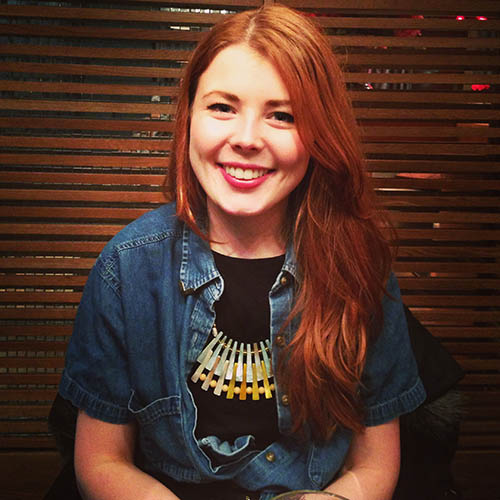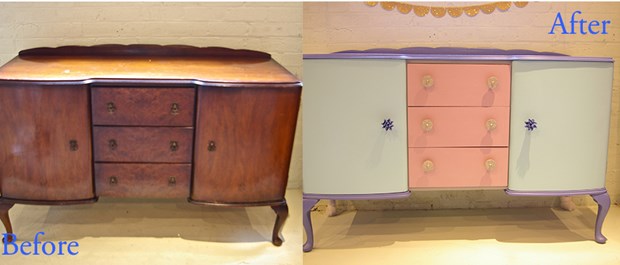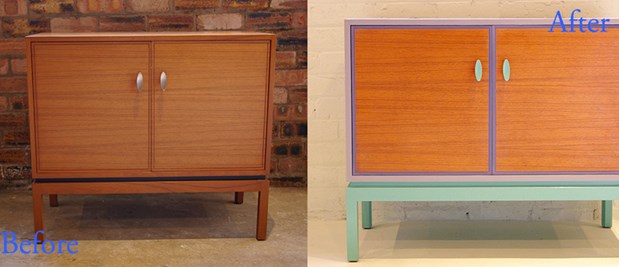Ziggy Sawdust - Future Positive
This week, ESPC is blogging about someone who may have a piece of furniture to brighten up your new property.
Future Positive
Future Positive is a group born out of love for people doing creative and innovative things. Based in Scotland and always looking for new contributors to help them document the work of other creative types from all around the world, Future Positive aims to promote creativity and inspire others to let their creative sides out.
Future Positive recently interviewed Amy Dolan of Ziggy Sawdust and ESPC leapt at the opportunity to find out more about Amy and her furniture venture.
Jakub Michalski, founder of Future Positive, admires Amy's creativity saying:
"I was just amazed with how great her idea was! There is so much negativity around us, we live in very challenging times, and many people have problems with implementing their creative ideas into life. Amy is a great example of young, creative and entrepreneurial minded person, who was brave enough to stick to her idea and make it work."
Watch the interview that Future Positive did with Amy on her business Ziggy Sawdust on Vimeo here. Follow Future Positive on Facebook for more updates on Amy and others here.
Amy Dolan - Ziggy Sawdust
Amy started a business of her own in her early twenties up-cycling furniture in Edinburgh and since then the business has really taken off. Here Amy tells us about her love of furniture, turning it into something special and has some great advice for ESPC readers looking to make their home interiors a little more creative- a far leap from flat pack furniture!

AMY studied Sculpture and Glasgow School of Art, and whilst there, she used domestic objects and salvaged furniture in the majority of her artwork. She says that she has always been drawn to things that have a past and a history; wondering where they've been and what they've seen.
She explains why she chose her furniture focus saying:
"It really amazes me to see the furniture that people throw away these days. The craftsmanship and solid quality of the furniture of yester-year is far superior to the majority of the furniture that is manufactured today, and to think that people would rather get rid of it in favour of a new piece of flat-packed furniture doesn't make much sense to me!
"I see myself as a 're-designer' as I work on furniture that has already been designed and made in the past. I don't design or make furniture from scratch, I like to see potential in pieces that are on their last legs (excuse the pun!) and give them a new lease on life.
"Ziggy Sawdust is all about rescuing pieces of old furniture before it gets to landfill and giving it a new lease of life and a quirky edge, so as it can fit into contemporary interiors and be loved once again. But I also like being able to give someone something different- a piece that could not only become the focal point of a room, but also express the owner's individual style and personality… As David Bowie's Ziggy Stardust was escapism for many during the bleak conservative rule of the 1970s, I hope Ziggy Sawdust furniture will be escapism from the recent trends in generic flat-packed furniture!

"I think my style, in terms of furniture could be described as being 'bold'. I like to think outside the box and rework a piece to really stand out, making people take notice of it again rather than dismiss it as being old and dated.
"Traditionally, furniture has been bought in suites of stained, varnished wood to keep a neural constant, while colour is reserved for walls and decorative furnishings. However, I like to flip this around in keeping with the minimalist and Scandinavian inspired trends in interior design, where white walls are a staple, and statement pieces and pops of colour are left to stand out and really shine.
"However, when it comes to working on a commissioned project for a client, the project becomes more of collaboration. I like to consult the client on every step of the way, ensuring that I am marrying their vision with my vision and reworking a piece to suit their style and interior; creating a statement piece that is tailored to their own individual requirements.
"I love to look at a piece of furniture and visualise it as basic shapes or building blocks, thinking of where the separate pieces of wood originally came together. I then think of how I can use colour to highlight these structural intricacies and emphasise the beauty in its original craftsmanship."
Amy says on supporting local enterprises like Ziggy Sawdust:
" I think, as we witness the death of the British high street, people are realizing that they don't want to buy mass produced products that everyone seems to own and would rather buy products which are a little bit more unique…buying from a local business means that you are able to receive that level of service from the person who has personally worked on the product you are buying, and you can see for yourself the care and passion that has gone into creating the item for you."

Amy's furniture advice
"I think it is important to buy a piece of furniture because you really want it, not just because it does the job and is serviceable.
People tend to think that flat-packed or mass produced furniture is less expensive option, and that really is not always the case.
Plus, the majority of vintage furniture was built to last, and if it is still around today, it has already stood the test of time. It also has far more charm than a lot of new pieces and you will not walk into your friend's house and realise you own the exact same furniture as them!
And don't forget to seek potential in furniture that you already own. It's amazing how well a piece can be scrubbed up… even 90s pine can be transformed!"
Amy's Top tips
Top tips for people wanting to up cycle a piece of furniture
- If a piece of furniture is still standing (give or take a wobbly leg or two), then don't write it off yet, it can still be saved and transformed!
- Look past scratched varnish and worn surfaces and find a piece that is the right shape and size for you.
- Sand or strip off any paint or varnish and make sure you get the entire surface area as smooth as possible before priming.
- Decide on the type of finish that you would like and chose paint that will allow you to achieve that- whether that is a 'shabby chic' look that will age further with time or a clean, hardwearing finish that will keep well.
- Don't under estimate the time that it takes… always start by painting a piece upside down first, apply one colour at a time to avoid any messy lines, wait patiently for the paint to fully dry between each coat and always lightly sand between each coat of paint.
